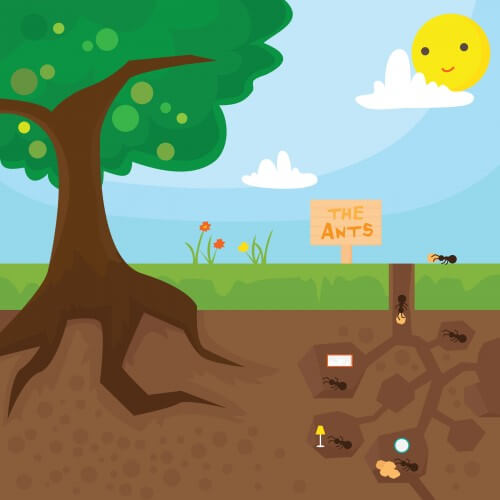Some ants build latrines in their nests

Most animals, with the exception of dung beetles, go to great lengths to avoid excrement. Humans, usually, build entire rooms for the sole purpose of flushing and flushing their excreta. The feeling of disgust developed for good reasons. Feces are an excellent substrate for the growth of microorganisms, some of which can cause serious infections and diseases.
Like us, many insects that live in colonies have developed ways to maintain sanitation in nests or hives. Bees leave the nest and go to a flight intended for defecating. Some ants, such as leafcutter ants, use feces to fertilize the "gardens" where they grow mushrooms for their food. But only certain "sanitation workers" are allowed to handle it. Ants, in general, are known for their cleanliness: they remove the bodies of the dead from the nest and throw away food scraps and other types of waste in garbage rooms.
Tomer Chaczaks, a biologist from the University of Regensburg in Germany, was therefore surprised when he discovered black spots accumulated in the corners of the nests, made of white plaster, of his black garden ants of the species Lasius niger. In the course of his seven years of observation, he became convinced that these were faecal stains.
To confirm his suspicion, Czaczaks added artificial color to the diet of 21 ant colonies. And indeed the black spots began to be colored in bright shades of blue and red. Since the ant excrement piles never contained food scraps, corpses, or other garbage, Chachaks and his colleagues concluded that these piles were probably "latrines." The results are detailed in the February 2015 edition of the journal PLOS ONE.
No one really understands why the black garden ants keep their excrement inside the nest, especially considering the fact that the ant family is known for a clean household. It is possible that this is used for protection, or to delimit the living space or as a building material. And maybe the feces are used as a source of salt or other food ingredients. Another possibility, Chachaks speculates, is that the waste accumulates precisely because of the stench. "Ants distinguish between a mate and a predator by smell," he explains. "New ants in the nest may 'dip' themselves into the piles to quickly absorb the colony's scent." Each of these explanations is plausible, so further studies will be required to choose the best of them all.
"The obvious next step is many boring observations during which I hope to catch the ants using the toilet," he says. To watch them secretly, Chachex will have to install peepholes in the nests and use a red light that the ants can't see. Come on entomology!
The article was published with the permission of Scientific American Israel
